Yukon Futurus Pro 16×50 Handleiding
Yukon
Verrekijker
Futurus Pro 16×50
Bekijk gratis de handleiding van Yukon Futurus Pro 16×50 (4 pagina’s), behorend tot de categorie Verrekijker. Deze gids werd als nuttig beoordeeld door 63 mensen en kreeg gemiddeld 4.6 sterren uit 32 reviews. Heb je een vraag over Yukon Futurus Pro 16×50 of wil je andere gebruikers van dit product iets vragen? Stel een vraag
Pagina 1/4

THE BINOCULARS COME EQUIPPED WITH:
• Binoculars Futurus Pro™
• Neck Strap
• Light Filters 2*
• Padded Carrying Case
• Instruction Manual
• Lens Cloth
• Tripod Adapter
• Warranty Card
* 22061NF, 22062NF, 22064NF models come without light filters
DISTINGUISHING FEATURES OF THE FUTURUS PRO™ SERIES BINOCULARS:
• Innovative structural design which allows long distance viewing in a compact package
• Wide-angle optics for a wide field-of-view
• Built-in distance-measuring reticule
• Porro prism system which yields higher magnification and greater depth perception
• BAK4 optical glass for optimum light transmission and reduced distortion at the edges
• TRUE COLOR™ multilayer lens coatings that provide bright images and natural color reproduction
• Center focus mechanism
• Ergonomic body for easy operation
• ECLIPSE™ protective lens caps smartly engineered into the body
• Rubber-armored, shock-proof carbon plastic body
• IPX4 rating against water intrusion
• Tripod mountable
• High viewing range
• High image quality
• A set of light filters for various viewing conditions

• Stylish and durable case
FUNCTIONAL FEATURES OF THE FUTURUS PRO™ SERIES BINOCULARS
Model Magnification Key Features: Recommended for…
Wide-angle 7х А50W 7x Largest exit pupil diameter
Extra long eye relief
Marine and wide open space
observation.
Wide-angle 10х А50W 10x
Clear and bright image for
dawn or dusk
The most versatile model
Optimal balance between
magnification
and field of view
Nature observation,
hunting, shooting, sporting
events, twilight conditions.
Mountaineer 16x50 16x
Extra magnification for long-
distance viewing
Highest practical
magnification
Mountainside observation,
detailed long distance
observation.
USING YOUR FUTURUS PRO™ SERIES BINOCULARS
Before using your binoculars for the first time, please review all of the instructions contained within
the instruction manual. Carefully following the instructions, you will get the most out of this precision
instrument.
Protect your binoculars by exercising caution when in the company of children or people unfamiliar
with the proper use of optical instruments.
ATTENTION!
Always protect your eyes and never look directly at the sun or any other source of bright light
through the binoculars!
ATTENTION!
When setting the Interpupillary Distance, be careful not to jam the tips of your fingers in the
folding action of the two barrels of the binoculars.
Setting the interpupillary distance (IPD)
• Remove the binoculars from their case and flip open all four lens caps on both the large objective (1)
and the smaller eyepiece lenses (2).
• For utmost utility, the objective lens caps (1) are constructed to lie flat against the housing. For your
convenience, you can rotate the opened lens caps to about their center until you find the most unobtrusive
position.
• Pick an object off in the distance of at least 30m (100 ft) away from you, and aiming in its direction,
fix your gaze on the object through the binoculars. Moving the two halves of the binoculars up or down close
to the central pivot (3), adjust the Interpupillary Distance until you see a single circular field.
FOCUSING THE BINOCULARS AND DIOPTRIC ADJUSTMENT
• Aiming the binoculars at any distant object with the right lens cap closed, turn the large center focus
wheel (3), until you see a sharp image through the left fixed eyepiece.
• With the image in the left eyepiece now focused, you can proceed to Dioptric Adjustment. This will
address the natural differences between the right and the left eyes and reduce eyestrain from prolonged use.
• With the left lens cap now closed, look through the right eyepiece at the distant object and turn the
Diopter Knob of the right eyepiece (4) until you get a crisp image.
• Reopen the lens cap and attentively turn the central focusing wheel (3) until you get a sharp image
through both barrels.
• As you continue viewing, you may find that you need to refocus the image. This should be done only
using the central focusing wheel (3) as you have already tuned the binoculars to your individual needs.
• Special characters “+ | -“ and “^”, located near the right eyepiece (4), will help you to easily mark and
remember your personal setting for the Diopter Knob.

SUGGESTED APPLICATIONS OF LIGHT FILTERS
• The orange filter is recommended for viewing objects that are farthest away from you. The filter will
also enhance the quality of the image in poor conditions such as fog, haze, storm, sand storm, etc.
• The protective filter is necessary in harsh conditions, so as to shield the objective lenses from dirt,
sand, dust, and scratches. It is also recommended in environments unshielded from UV rays, such as on the
water or in the mountains.
INSTALLING THE LIGHT FILTER
• Select the appropriate pair of light filters according to the conditions.
• Be careful not to touch any glass surface, and grip the light filter by its outer metal rim (The light filter
should be held with the index finger and the thumb).
• One at a time, insert both light filters into the binoculars' rubber surrounds, just in front of the
objective lenses.
• To remove the light filter, again grip it with your fingers and give about a 1/3 to 1/4 turn, at the same
time lightly pulling it towards you.
USING THE DISTANCE-MEASURING RETICULE
Located in the right eyepiece, the distance-measuring reticule enables you to determine the distance to
your subject. The distance-measuring reticule is calibrated to the height of the withers of a wild boar at 0.7m
and the average height of a buck with antlers at 1.75m.
Product specificaties
| Merk: | Yukon |
| Categorie: | Verrekijker |
| Model: | Futurus Pro 16×50 |
Heb je hulp nodig?
Als je hulp nodig hebt met Yukon Futurus Pro 16×50 stel dan hieronder een vraag en andere gebruikers zullen je antwoorden
Handleiding Verrekijker Yukon

24 December 2023

14 Januari 2023

14 Januari 2023

14 Januari 2023

14 Januari 2023

14 Januari 2023

14 Januari 2023

10 Juni 2023

14 Januari 2023

14 Januari 2023
Handleiding Verrekijker
- Hama
- Focus
- Kite Optics
- Leica
- Fujinon
- NEO Tools
- National Geographic
- SIG Sauer
- Praktica
- Dorr
- Traveler
- Levenhuk
- Asaklitt
- Osprey
- Sharper Image
Nieuwste handleidingen voor Verrekijker
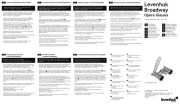
11 September 2025
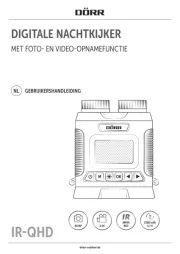
1 September 2025
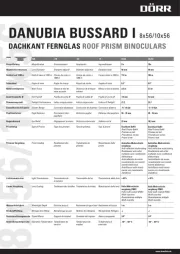
25 Augustus 2025
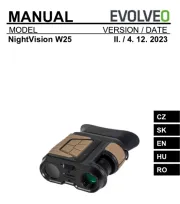
15 Augustus 2025
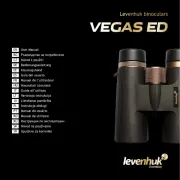
5 Augustus 2025

22 Juli 2025

22 Juli 2025
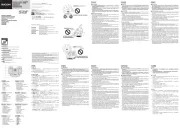
21 Juli 2025

21 Juli 2025
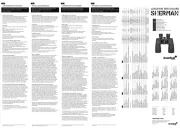
21 Juli 2025